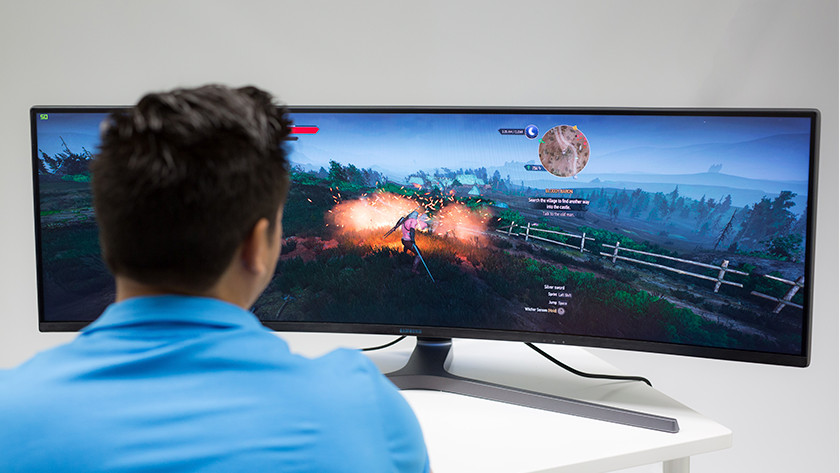How to convert CRT to LCD?
You can get the original CRT Monitor drivers through Windows 7 or by upgrading to Windows®. While these CRT Monitor drivers are essential, they support core hardware functions. Here’s a complete guide to manually updating these Windows device drivers.
Automatically update CRT Monitor drivers:
We recommend that for most Windows users (unless you are advanced) download a driver update tool such as DriverDoc [DriverDoc – Solvusoft Product] to update your CRT monitor drivers. This tool does everything for you by automatically downloading and updating CRT Monitor drivers and prevents you from installing the wrong drivers for your operating system version.
When you use driver updates like DriverDoc, it not only updates your CRT Monitor drivers, it also updates the rest of your PC drivers.
With a database of over 2,150,000 drivers (updated daily), you can be sure that your hardware is covered

What is the function of CRT monitor driver?
Hardware device drivers enable you to communicate with the operating system. The developer has created these “small software applications” specifically for CRT Monitor to enable this connection.
What are the CRT monitor driver update instructions?
Manually, you can update CRT Monitor drivers through Device Manager or automatically using the driver update software.
What is the purpose of updating CRT drivers?
Benefits of upgrading CRT Monitor drivers include better interoperability, the ability to maximize hardware features, and increased performance. Risks of installing incorrect CRT Monitor drivers include software failure, slower performance, and general computer instability.
Many people do not see the need to update their CRT Monitor device drivers, so they will never be updated.
CRT Monitor errors often result from incompatible or outdated device drivers. Device drivers can be inexplicably damaged for a variety of reasons. The best part is that your CRT Monitor drivers can always be modified to solve the laptop problem.
Creating CRT Monitor drivers is not an easy task due to the large and confusing official website of Windows. Despite having experience locating, installing, and manually updating CRT Monitor drivers, this can be time consuming and very tedious.
Incorrect versions of the driver can adversely affect the performance of your computer, often causing more problems.
A lot of work has been done to update the device drivers, so we strongly recommend that you download and install the driver update program.
A driver update tool provides new versions of drivers for your hardware and can also save backups of existing drivers before making any changes.
A backup of the driver provides an immediate and secure way to restore the driver to its previous configuration, if needed.

LCD liquid crystal display monitors are now standard in computer imaging. However, when it comes to accurate millisecond presentation, they often present inaccurate and unreliable presentation times.
More precisely, we found the numbered primer with the mask in the conditions of zero awareness with both types of monitors; Therefore, the present study highlights the importance of hardware configurations for experimental psychological research.
Improper settings may lead to more “noise” in the results, thus hiding potential effects.
With the increasing advancement of modern display technology, large CRT cathode ray monitors are no longer produced (with a few exceptions).
Instead, flat panel technologies have become the standard, and among them, LCD liquid crystal displays are the most common.
This technological change has also influenced empirical research by relying on the provision of stimulus computers. Based on decades of experience with CRT monitors, their features are well known and have been proven to provide reliable and accurate actuators.
However, LCD monitors were less reliable in the early generation and were not sufficient to provide accurate stimuli, so many researchers are still reluctant to equip their laboratories with new technology.
However, due to the vast knowledge and resources required, achieving measurement may be difficult in practice. Even if researchers consider the technical differences, it is still unclear whether CRT and LCD monitors have comparable perceptual effects, especially when it comes to providing short, millisecond stimuli.

Playing modern games on an old CRT monitor produces remarkable results. It is mentally superior to anything from the LCD era to the latest OLED displays.
The best solution for PC gamers is not to easily access the CRT settings, and prices change dramatically, but the results can be simply amazing.
The advantages of CRT technology over modern flat panels are well documented. The CRT does not work the way the LCD works through a fixed pixel, instead the three “gun” beams are placed directly on the tube.
Therefore, there is no incremental blur and there is no need to run at any specific native resolution. At lower resolutions, you may notice “line scanning” more quickly, but the fact is that even lower resolution gaming outputs such as 1024 × 768 or 1280 × 960 can look great.
Of course, higher-level CRTs can import and process higher resolutions, but the bottom line here is that getting rid of a natively set resolution is a gamer.
The second advantage is the sharpness of movement. LCD technologies all use a technique known as “sample and hold” that results in motion with remarkably lower resolution than still images.

Motion control in CRT is at a different level than modern technology, in that every aspect of each frame is presented in the same way, to the point that even a 768p display may provide more detail than a 4K LCD.
Even compared to the 240 Hz LCDs tested, the classic mouse pointer response test feels different and faster. Benefits of Responsive Gaming In particular, with the precise input mechanism as much as a mouse on a more general level, there is a sense that games and hardware have become CRT technology over the years.
Visualization is more realistic than ever, and there is a point about the appearance of CRT that emphasizes much more realism, especially the nickname, compared to the fixed-pixel network LCD.
Second, computer hardware is now so advanced that it is relatively easy to work with refresh rates above 60 Hz, and many CRT monitors can easily operate at much faster frequencies, up to 160 Hz or more, depending on the display and input. Slowly The clarity of all this is very fundamental to technology, which is basically obsolete after the millennium.
And this is where the negative of CRT game starts hitting home. This technology is obsolete, and presents many problems. The most obvious thing about form factor: CRT displays are large and heavy.
Very few widescreen CRTs are available, and even the Sony FW900 has a 16:10 aspect ratio, which means the game console is not really suitable for CRT displays. 4: 3 screens are even smaller. Yes, you can run consoles with CRT, but I feel that for many reasons, this is a track that is good for PC users.

Finally, there are costs that can be reduced by both methods, along with the display quality you will actually receive. The FW900 is a legendary screen that meets the vast demand of prices.
Suffice it to say that getting the image quality to the expected level can take a lot of time, effort and research, and at a more basic level, CRT screens are made of glass, and glare can be problematic.
Modern titles in CRT look exciting, if you want to take advantage of the high refresh rate, you can increase the page zoom and there is no need to worry about clarity as the main determinant.
Build a switch from CRT to LCD monitors
Here is the slightest change from the screen to the liquid crystal display and are tools for making more use of the new LCDs.
Also, key settings with liquid are more complex and much more necessary than CRT. To be sure, all monitors can be adjusted properly. But LCDs are likely to experience sharpness or visibility if not set optimally.
In this guide, we will look at the systematization differences between LCD and CRT. We will also describe the types of terms of use that best fit a display type.
We will describe some of the important tools you can use to ensure that your customers get the most out of their LCD selection.
CRT vs. LCD: Pros and Cons
We will start with the pros and cons of CRT monitors and then do the same for LCDs. After that, we will compare and explain which type of display is suitable for specific usage scenarios.
Comparison of positive and negative results and the difference between CRT and LCD depends on the difference between analog and digital technology. CRT is analog; Thus, they support consistent values, smooth scaling, and high arbitrary resolution (within reasonable limits or within the range of technology).
LCDs are digital and therefore work like an array of separate pixels, with separate values, discrete colors, and on a gray scale with a steady, natural resolution.
Mathematically, this is the difference between a continuous integral versus a step function. How to place them here is as follows:
Black surface and contrast: CRT produces a high level of contrast. They may be used in light or dark environments.
Gray color scale accuracy: The best gray color scale accuracy; Used as a reference standard for professional calibration. On a perfectly gray scale with an infinite number of intensity levels.
Cost: CRT has the lowest cost among computer display technologies.
Motion artifacts: The faster the images move on the screen, the more the values of the past display can affect the content of the current screen.

These residues are called kinetic artifacts. CRT provides fast response time without motion artifacts. For this reason, CRT is the best choice for high-speed or ever-changing images.
Resolution: CRT works with any resolution, geometry or aspect ratio and there is no need to refresh the displayed images. CRT also runs on the highest resolution graphics card support.
Negative cases include the following:
Pollution: CRTs emit electrical, magnetic, and electromagnetic fields, where magnetic fields often pose health hazards (although no available scientific evidence supports this).
Geometric Distortion: CRT is subject to geometric distortion and generally includes settings to deal with it. But they may also be affected by the magnetic fields of other devices.
Interference: CRT causes distortion of vision, known as Moire patterns. While many monitors offer Moire reduction, this is not a complete solution.
Screen Shape: Older CRTs may have round screens that cause the image to deform in the corners. The new CRT is relatively flat.
Resolution: CRTs use electron beams to activate pixels on their screens. This results in smoother images than the LCD, which automates the resolution of the original image. (But CRT is usually sharper than LCD, which does not work in true resolution).
Size, weight and power consumption: CRT is higher. They use more energy and replace the heat display more than other technologies.
Pros and Cons of LCD
Brightness: The peak intensity of an LCD displays bright images that work well in well-lit environments.
Geometric distortion: at zero natural resolution and at other resolutions due to insignificant compensation effects.
Screen Shape: LCD screens are as flat as technology allows.
Resolution: The resolution is quite clear, but LCDs using analog inputs require fine-tuning of the tracking and pixel phase.
Size, weight and power consumption: LCDs are thin-walled devices that are generally lighter than CRTs. LCDs also consume less power and have less heat than CRTs.
Spectrum ratio: Each LCD has a fixed resolution and aspect ratio. For panels with a resolution of 1280 x 10 1024 (common on 17- and 19-inch models), the aspect ratio is 5: 4 or 1.25, compared to other monitors the ratio is 4: 3 or 1.33. This may require a box of 1280 resolution 960 resolution to achieve a standard 4: 3 aspect ratio.
Bad pixels and screen uniformity: LCDs may contain pixels with poor or poor performance or on or off. There are also changes in the backlight due to the use of light sources on the top or bottom edges of the screen.
Black surface, color saturation: LCDs are weak in producing black and dark gray colors. This results in low contrast and reduced color saturation in low-intensity colors, making LCDs a poor choice for dim or dark environments.
This leads to problems with image accuracy with black, gray, and gamma scales, and costs for professional color balance: LCDs cost more than “CRT” more than double or more than “8212” with comparable diagonal measurements.
Interference: LCDs using analog input require fine-tuning of tracking and pixel phase to minimize digital noise in the image display. Automatic controls seldom produce optimal outputs, and complete elimination of digital noise is completely impossible.
Motion Artifacts: The faster the LCD pixel refresh speed & # 8212; It is often called response time, although the term is more appropriate for CRT & # 8212; Motion artifacts are more likely to appear. For continuous or very fast movement, some artifacts in an LCD are unavoidable.
Resolution: The native resolution is set by the manufacturer and cannot be changed. All other resolutions require re-scaling and lead to image degradation, especially in the case of good text and graphics.
Viewing angle: Viewing angle affects brightness, shrinkage, gamma and color mixes. Face-to-face observation has the best results.
White saturation: The white area in the LCD increases easily and the maximum brightness occurs before the grayscale peaks. This phenomenon is best controlled with precise contrast adjustment settings.





بدون دیدگاه